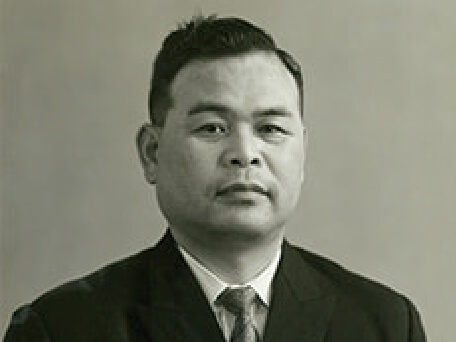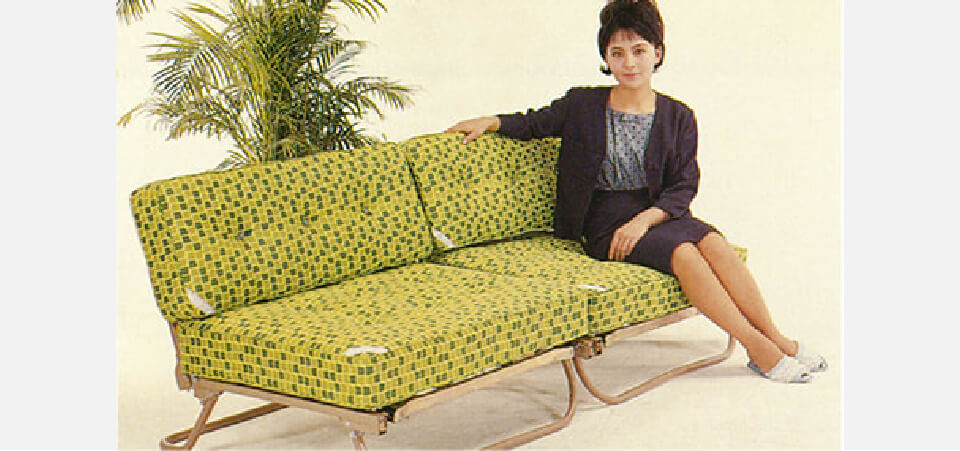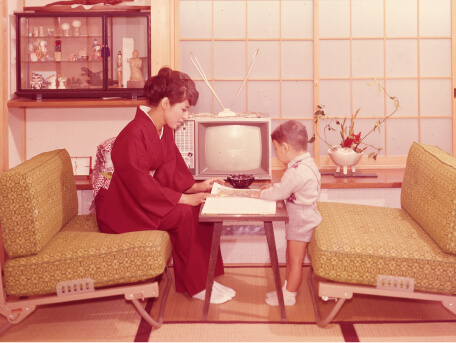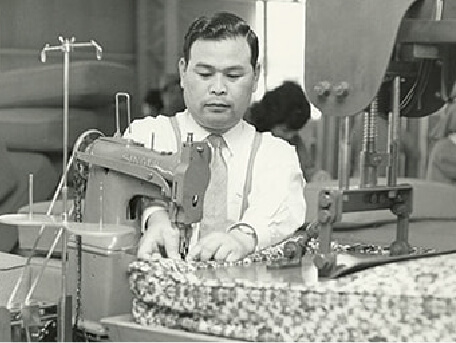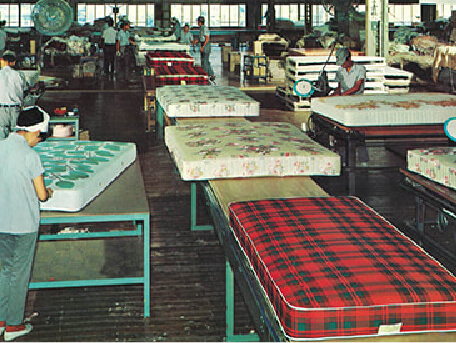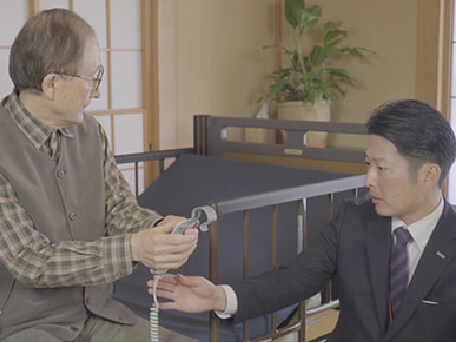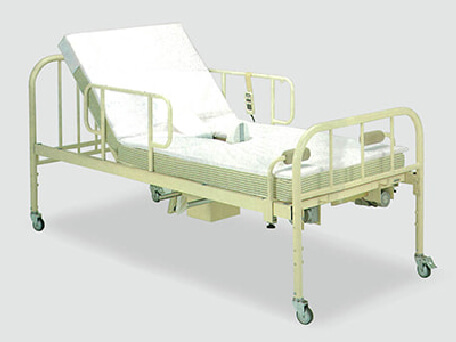Birth of FRANCE BED
In 1956, FUTABA SEISAKUSHO CO.,LTD. released Japan’s first split bed
At the time, Japan was entering a period of rapid economic growth. With the emergence of the “Three Sacred Treasures” — black-and-white TVs, washing machines, and refrigerators — Western lifestyles began to influence younger generations. However, traditional bedding styles like futons on tatami mats remained dominant, and Western-style beds were not yet widespread.
Driven by his vision to “bring a lifestyle with beds to young people who admired Western culture,” Minoru Ikeda studied beds intensively and conducted thorough market research. He designed a foldable split bed suitable for Japan’s compact living spaces — a sofa by day, a bed by night. Through an internal naming contest, the product was named “France Bed” and launched in 1956.
The Split Bed That Inspired the Company Name
At the time of the product’s release in 1956, Japan had not yet liberalized overseas travel (*). France, known through films and fashion, was seen as a dreamland and a symbol of elegance. The glamorous lifestyle of Parisian women captivated young Japanese women.
Amid this cultural backdrop, the split bed “France Bed” was promoted under the concept of “making young hearts dream.” Its name quickly gained recognition through TV and print media, and the product became a major hit.
The name resonated deeply with the public, and the product became a major success. In 1961, the company officially adopted the name FRANCE BED CO., LTD.
(* Overseas travel for Japanese citizens was liberalized on April 1, 1964. From that date, tourist passports were issued, allowing one overseas per year with a $500 limit on foreign currency.)
After changing the company name to FRANCE BED, we made numerous visits to Europe and the United States to study and learn from authentic bed and mattress manufacturing techniques.
We didn’t just import Western ideas, we adapted them. Through extensive research in Europe and the U.S., we learned that Japanese body types and living environments required different solutions. This led us to develop beds and mattresses specifically designed for Japanese people.
In the 1960s, as living standards rose in Japan, residential spaces also evolved significantly. With more rooms and a growing trend towards private bedrooms, the country entered a true “bed era.” Reflecting this shift, FRANCE BED reached a production milestone of one million beds in 1966, followed by 1.5 million beds in 1976.


